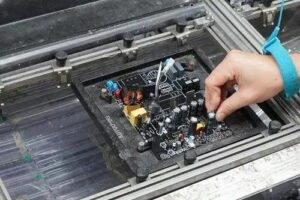With the continuous development of electronic manufacturing technology, surface mount technology (SMT) processing and traditional plug-in technology have become the two mainstream processes in the field of electronic assembly. These two processes each have their own characteristics, and they will be compared in detail from several aspects below.
1. Production efficiency
SMT processing uses automated production lines to quickly and accurately mount components onto PCB boards through high-precision surface mount machines, greatly improving production efficiency. In contrast, traditional plug-in processes require manual insertion of components, resulting in lower production efficiency.
2. Product quality
SMT processing uses precision equipment and techniques to achieve smaller component sizes and higher mounting accuracy, thereby improving product quality and reliability. However, traditional plugin technology is relatively poor in product quality and stability due to significant human factors.
3. Production cost
Although the initial investment in SMT processing equipment is relatively high, due to its high production efficiency and stable product quality, the production cost of SMT processing is relatively low in the long run. Although traditional plugin technology requires less equipment investment, due to low production efficiency and unstable product quality, it may require more rework and maintenance, resulting in relatively high production costs.
4. Scope of application
SMT processing is suitable for large-scale, high-density electronic assembly, especially for consumer electronics, communication equipment, and other fields. Traditional plug-in technology is more suitable for special components, large-sized components, or situations that require special treatment.
There are significant differences between SMT processing and traditional plug-in technology in multiple aspects. With the continuous development of the electronic manufacturing industry and the promotion of technological innovation, SMT processing will gradually become the mainstream process, injecting new vitality into the sustainable development of the electronic manufacturing industry.
















